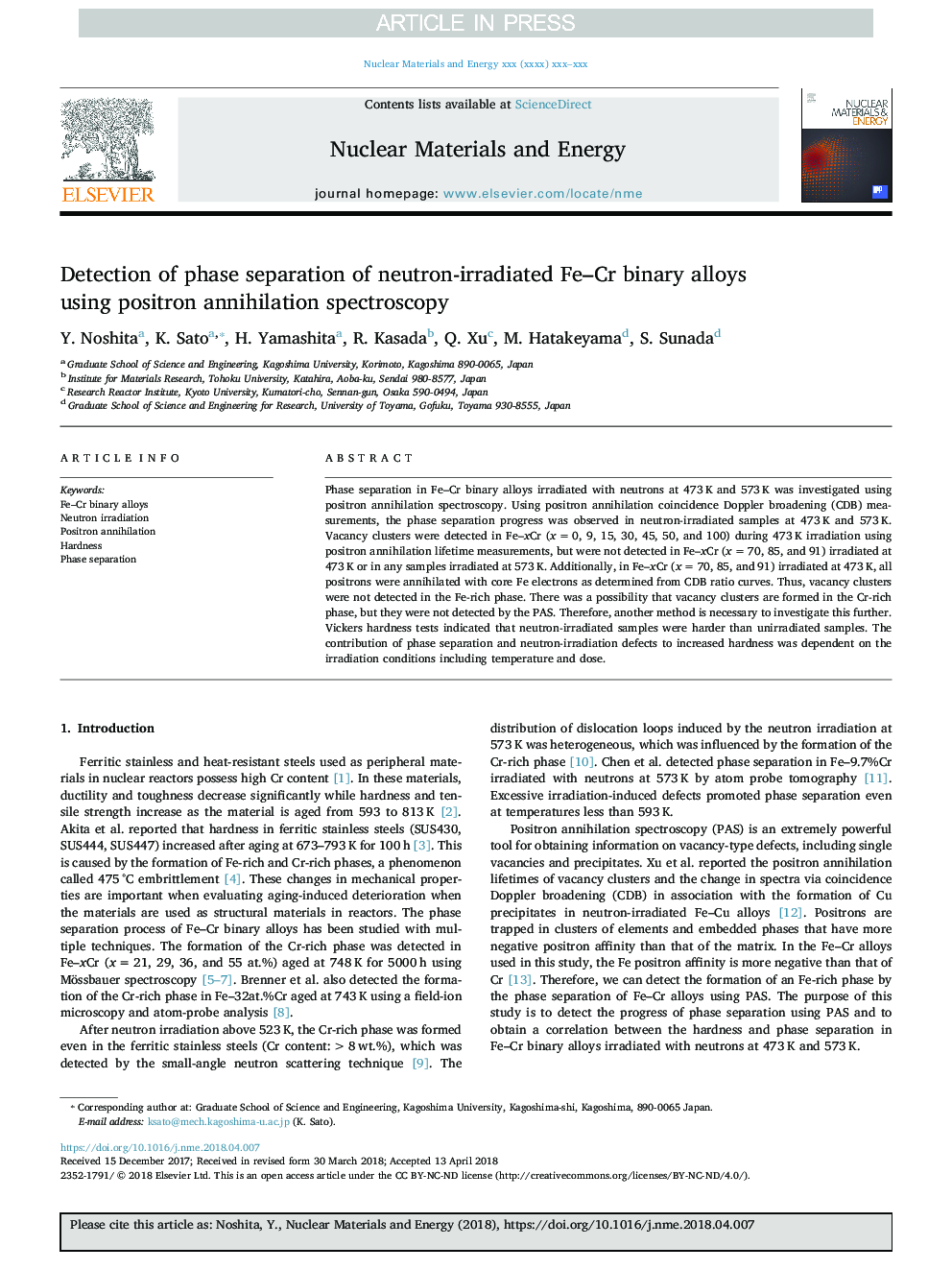| Article ID | Journal | Published Year | Pages | File Type |
|---|---|---|---|---|
| 7987322 | Nuclear Materials and Energy | 2018 | 5 Pages |
Abstract
Phase separation in Fe-Cr binary alloys irradiated with neutrons at 473â¯K and 573â¯K was investigated using positron annihilation spectroscopy. Using positron annihilation coincidence Doppler broadening (CDB) measurements, the phase separation progress was observed in neutron-irradiated samples at 473â¯K and 573â¯K. Vacancy clusters were detected in Fe-xCr (xâ¯=â¯0, 9, 15, 30, 45, 50, and 100) during 473â¯K irradiation using positron annihilation lifetime measurements, but were not detected in Fe-xCr (xâ¯=â¯70, 85, and 91) irradiated at 473â¯K or in any samples irradiated at 573â¯K. Additionally, in Fe-xCr (xâ¯=â¯70, 85, and 91) irradiated at 473â¯K, all positrons were annihilated with core Fe electrons as determined from CDB ratio curves. Thus, vacancy clusters were not detected in the Fe-rich phase. There was a possibility that vacancy clusters are formed in the Cr-rich phase, but they were not detected by the PAS. Therefore, another method is necessary to investigate this further. Vickers hardness tests indicated that neutron-irradiated samples were harder than unirradiated samples. The contribution of phase separation and neutron-irradiation defects to increased hardness was dependent on the irradiation conditions including temperature and dose.
Related Topics
Physical Sciences and Engineering
Energy
Nuclear Energy and Engineering
Authors
Y. Noshita, K. Sato, H. Yamashita, R. Kasada, Q. Xu, M. Hatakeyama, S. Sunada,
